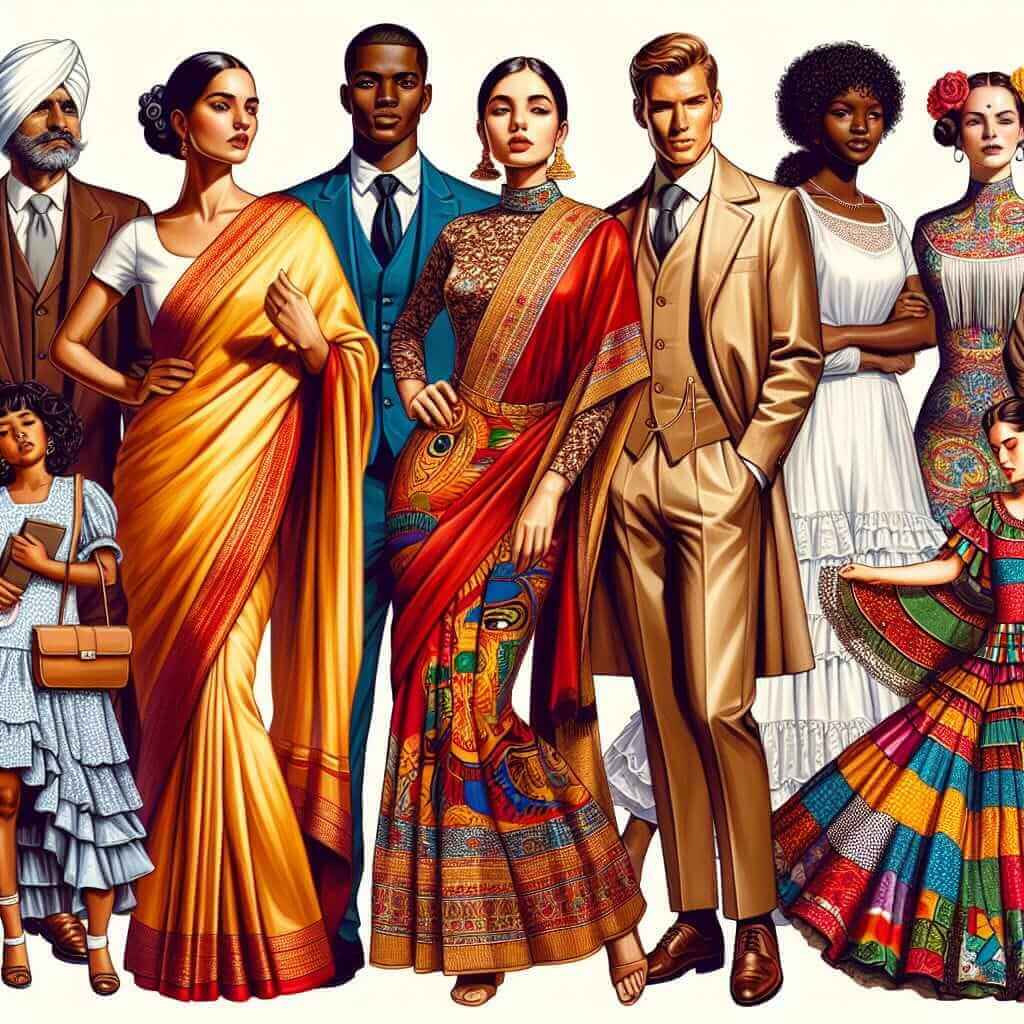As an IELTS instructor with over two decades of experience, I often get asked about the relevance of topics like clothes and fashion in the IELTS Speaking test. You might be surprised to know that these seemingly simple topics can offer a rich ground for assessing your English language skills. This article delves into why “clothes and fashion” are significant in IELTS Speaking, provides guidance on how to effectively answer related questions, and offers valuable tips to help you excel in your exam.
Understanding the Significance of “Clothes and Fashion” in IELTS Speaking
The IELTS Speaking test evaluates your ability to articulate your thoughts and opinions clearly and fluently. While the topics may vary, the core objective remains consistent: to assess your spoken English proficiency.
So, where do clothes and fashion fit into this?
The beauty of this topic lies in its universality. Everyone wears clothes, and most people have opinions about them, making it relatable across cultures. This allows examiners to gauge your:
- Vocabulary: Can you discuss different clothing styles, materials, and trends using a wide range of vocabulary?
- Grammar: Are you able to use complex grammatical structures accurately when describing your preferences or experiences related to fashion?
- Fluency and Coherence: Can you express your ideas about clothes and fashion smoothly and logically?
- Pronunciation: Is your pronunciation clear and easy to understand when using fashion-related vocabulary?
Approaching “Clothes and Fashion” IELTS Speaking Questions
Remember, there’s no right or wrong answer when it comes to personal preferences. The key is to demonstrate your language skills effectively. Here’s a breakdown:
Part 1: Expect the Basics
In this section, anticipate straightforward questions about your personal experiences and habits concerning clothes and fashion. For instance:
- “What type of clothes do you usually wear?”
- “Do you enjoy shopping for clothes?”
- “Is fashion important to you? Why or why not?”
How to Shine:
- Be Specific: Avoid generic responses. Instead of saying, “I like comfortable clothes,” elaborate with, “I prefer breathable fabrics like cotton or linen, especially during warmer months.”
- Offer Reasons: Always back up your answers with reasons or examples. If you enjoy shopping for clothes, explain why. Is it a stress reliever, a way to express yourself, or perhaps a social activity you enjoy with friends?
Part 2: Prepare for the Detailed Response
Part 2 presents you with a cue card, requiring you to speak for 1-2 minutes on a given topic. An example related to clothes and fashion could be:
“Describe a time you bought a piece of clothing you really liked. You should say:
- When and where you bought it
- What the piece of clothing was like
- Why you chose to buy it
- And explain how you felt about buying it.”
How to Shine:
- Structure is Key: Use the cue card prompts to structure your response logically. This ensures you address all aspects of the task.
- Tell a Story: Engage the examiner by narrating an experience rather than simply listing facts.
- Don’t Panic: If you find yourself momentarily stuck, take a breath and refer back to the cue card prompts to regain your train of thought.
Part 3: Dive into the Discussion
Part 3 involves a more in-depth discussion stemming from the Part 2 topic. Expect questions that encourage critical thinking and broader perspectives, such as:
- “What factors influence clothing choices in your country?”
- “Do you think the fashion industry has a positive or negative impact on society? Why?”
- “How have clothing styles changed over the years?”
How to Shine:
- Express Opinions Clearly: Don’t shy away from expressing your viewpoints. Use phrases like “In my opinion…” or “I believe that…” to introduce your perspective.
- Offer Balanced Arguments: Acknowledge different viewpoints even if you hold a strong opinion. This demonstrates your ability to engage in nuanced discussions.
- Provide Examples: Whenever possible, illustrate your points with relevant examples to make your arguments more persuasive.

Valuable Tips to Ace Your IELTS Speaking Test
- Expand Your Vocabulary: Familiarize yourself with a wide range of vocabulary related to clothing styles, fabrics, colors, patterns, and fashion trends.
- Practice Regularly: Engage in conversations about clothes and fashion with friends, family, or language partners to enhance fluency.
- Record Yourself: Practice speaking on various IELTS topics, record your responses, and analyze them for areas of improvement.
- Seek Feedback: Ask an experienced IELTS instructor or a native English speaker to evaluate your speaking skills and provide constructive criticism.
- Stay Updated: Browse fashion magazines, websites, or blogs to stay informed about current trends and expand your fashion-related vocabulary.
Remember, confidence is key! By preparing effectively and practicing regularly, you can confidently approach the IELTS Speaking test and achieve your desired results.